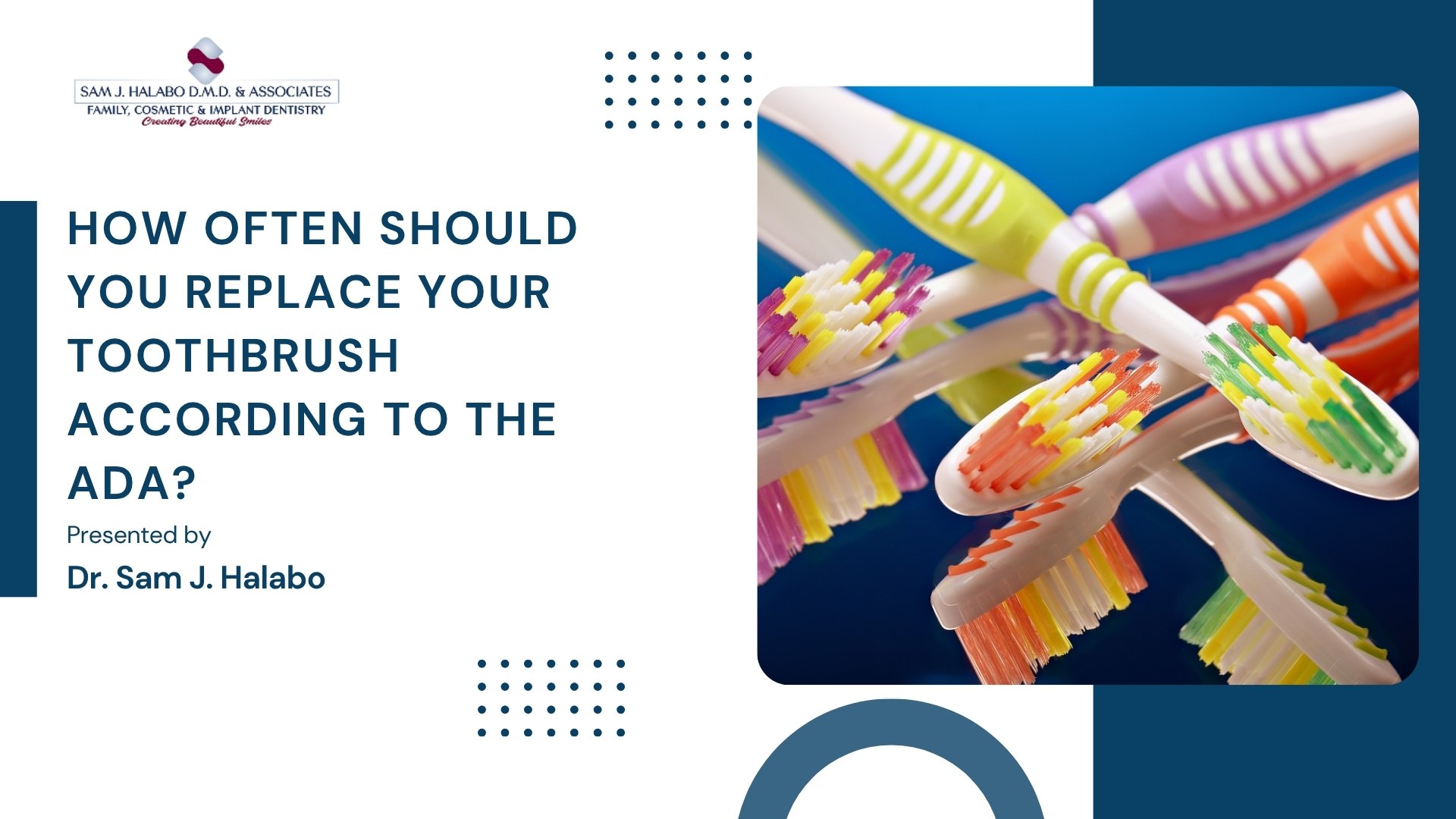Brushing twice daily is healthy, but using an old brush can be harmful. Most people may not realize that their toothbrush wears out and may not work anymore. The ADA (American Dental Association) toothbrush recommendation is helpful for your brushing routine to be safe and effective.
🧾 Table of Contents
⏳ How Frequently Do You Need to Replace Your Toothbrush?
🧼 What Are Effective Toothbrush Sanitation Methods?
👄 How Does an Old Toothbrush Affect Your Gums?
👨⚕️ How Can a Dentist Help You Maintain Toothbrush Hygiene?
📅 Stay On Track With Smarter Brushing Habits – Book Your Visit Now!
If you’re seeing a dentist in Chula Vista, they will likely remind you that an old toothbrush is not just less effective but may also put your oral health at risk. Worn and damaged bristles and buildup of bacteria may cause gum irritation, tooth decay, or even an oral infection if not replaced.
What Does the ADA Recommend About Replacing Your Toothbrush?
The ADA toothbrush recommendation advises changing your toothbrush every 3 to 4 months, or sooner if the bristles are frayed. Bristles lose their ability to clean over time, especially if you use firm pressure while brushing or brush with abrasive toothpaste.
The ADA suggests the following:
- To change your toothbrush after being sick (cold, flu, strep throat).
- To change your child’s toothbrush more frequently since they wear out faster.
- Use a soft-bristle toothbrush to clean your teeth gently but thoroughly.
These simple steps help keep your mouth healthy and stop bacteria from spreading.
How Frequently Do You Need to Replace Your Toothbrush?
It depends on how you use it and how much wear and tear you have given it. The general rule is every three months; however, you may want to replace it sooner if:
- Bristles are bent or no longer hold their shape.
- Your brush has a smell or looks discolored.
- You just recently recovered from an infection.
- You drop your toothbrush on an unsanitary surface.
Regular replacement of your toothbrush will help ensure that the tool continues to effectively remove plaque and will help you keep your oral routine as hygienic as possible.
What Are Effective Toothbrush Sanitation Methods?
Regardless of how often you replace your toothbrush, the way you care for it daily is important. The best methods for disinfecting your toothbrush can help you avoid germs between uses. Try these methods:
- Rinse thoroughly: All toothpaste and debris must be washed away after each use.
- Air dry upright: Do not leave it in a closed container or a cup where moisture can build up.
- Do not share brushes: It causes germs to be transmitted between people.
- Disinfect occasionally: A short soak in mouthwash, water, and hydrogen peroxide might help.
- Minimize contact: Keep your toothbrushes stored in such a manner that they do not contact each other.
Safe and clean storage of your toothbrush can help keep your toothbrush safe and help it have a longer usable life.
How Does an Old Toothbrush Affect Your Gums?
The impact of an old toothbrush on gums can be more serious than you think. Old, worn-out bristles can scratch or irritate gum tissue, and it could be very serious if you are brushing forcefully on top of it. This can lead to:
- Gum recession
- Inflammation or bleeding
- Higher risk of infection
- Poor plaque removal and gingivitis
Using a new toothbrush with soft bristles can assist in the protection of your gums and improve the overall performance of your brushing.
How Can a Dentist Help You Maintain Toothbrush Hygiene?
A regular visit to the dentist near you can help reinforce good brushing habits. Dentists can:
- Demonstrate the correct ways to brush.
- Provide a recommendation for a type of brush based on your needs.
- Make observations related to gum irritation from brushes if overused.
- Make reminders for changing toothbrushes at a reminder level.
Visiting the dentist can also be the perfect opportunity to ask about good hygiene practices and try as many recommendations as possible.
Stay On Track With Smarter Brushing Habits – Book Your Visit Now!
Changing your toothbrush on time is an easy way to keep your mouth healthy. A clean brush helps protect your smile and prevents future problems. Looking for expert care and personalized advice? Book a visit with Sam J. Halabo, DMD & Associates in Chula Vista for gentle, modern dental care tailored to you.
💬 FAQs
Is it a good idea to put a cover on my toothbrush?
Only if it allows air to flow. Tight covers trap moisture and can promote bacterial growth.
Do electric toothbrush heads last longer than a manual brush?
Electric toothbrush heads get replaced every 3 months, unless the bristles wear out faster.





